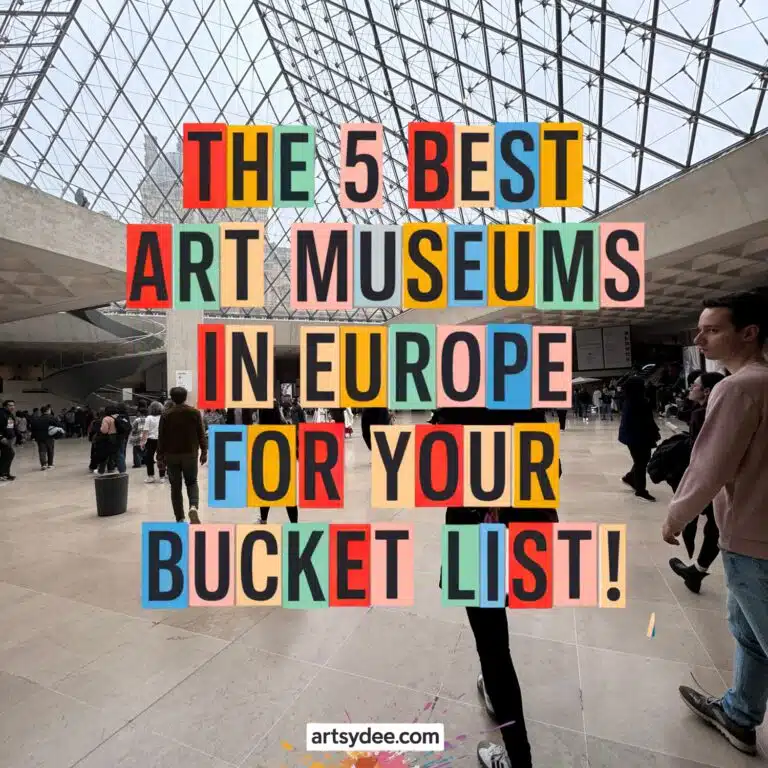Last Updated on October 26, 2025 by Dee
Standing in the Louvre for the first time, completely overwhelmed by the sheer scale of it all, I realized something: no art history textbook can prepare you for seeing a masterpiece in person.
I’d spent 18 years teaching art, showing my students countless images of famous paintings. But when I finally stood in front of the real thing—the actual brushstrokes, the texture of centuries-old paint, the way light catches the surface—everything changed. These weren’t just pictures in a book anymore. They were real, tangible proof that humans can create transcendent beauty.
Since that first trip to Paris, I’ve been planning my next European art adventures. Some museums I’ve experienced firsthand, others are still on my bucket list. But whether I’ve been there or I’m dreaming of going, these are the museums every artist needs to see at least once.
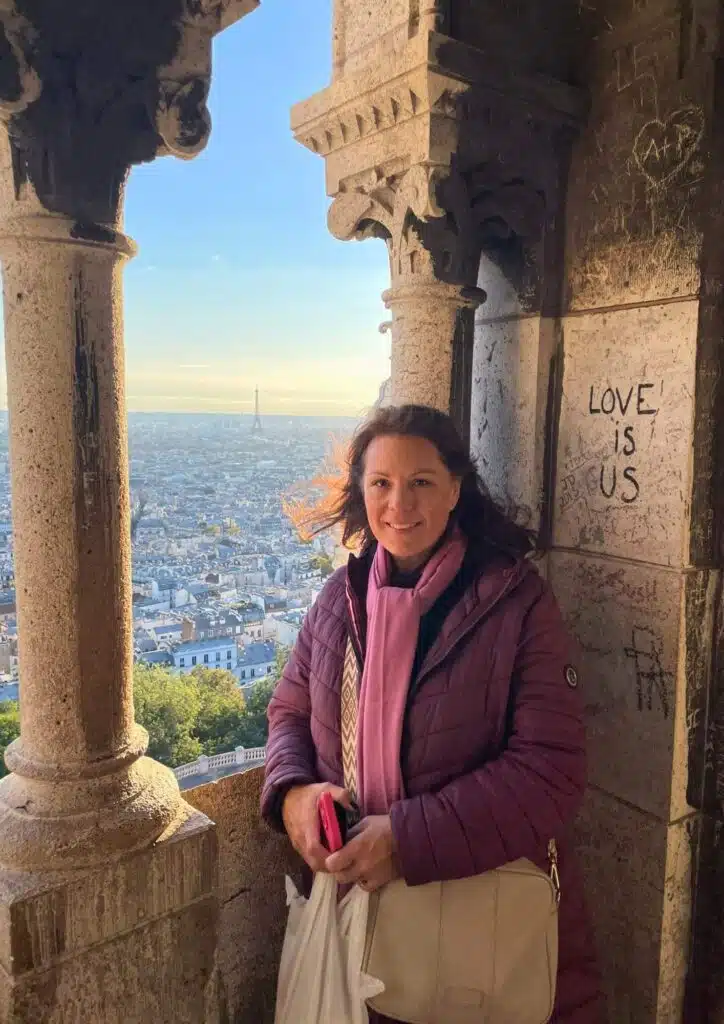
Why European Art Museums Matter for Artists
Here’s what nobody tells you about visiting famous museums: you can’t see everything in one day. And you shouldn’t try.
When I visited the Louvre, I made the classic mistake of trying to “do” the entire museum in one afternoon. I was so overwhelmed and exhausted that by the time I stumbled out into the Parisian evening, I could barely remember what I’d seen.
If I could go back and do it again? I’d give myself permission to focus on just one or two wings. To sit on the benches in front of paintings that spoke to me. To sketch, to observe, to really absorb what I was seeing instead of rushing through like I was checking boxes on a list.
These museums aren’t just tourist destinations—they’re creative pilgrimages. As an artist, seeing how the masters actually worked, understanding their color choices up close, studying the texture and scale of their paintings—it changes your own practice in ways that surprise you for months afterward.
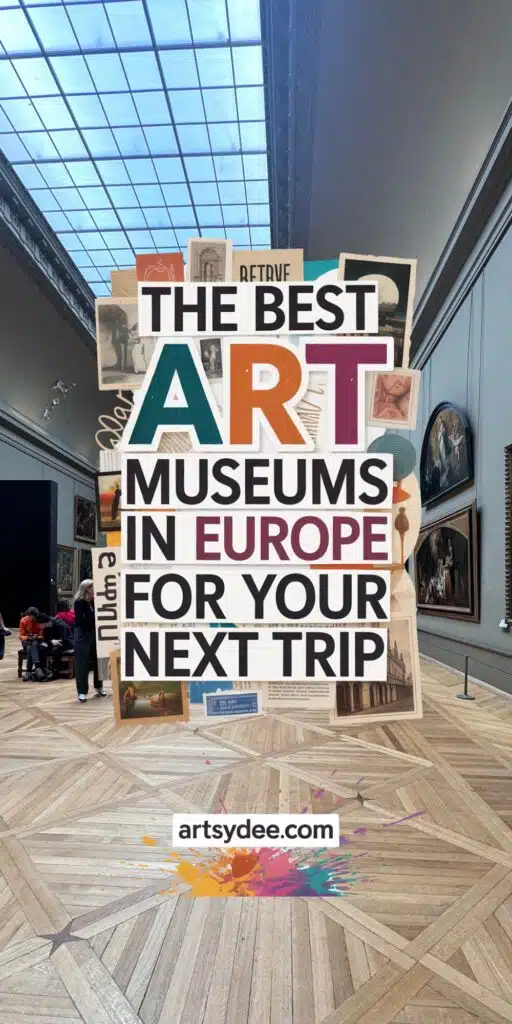
Planning Your European Art Museum Trip
Before we dive into specific museums, let me share what I learned (sometimes the hard way) about planning an art-focused trip to Europe:
Book major museum tickets online in advance. I can’t stress this enough. The Louvre, the Uffizi, the Van Gogh Museum—these places get packed, and showing up without a timed entry ticket can mean standing in line for hours or missing out entirely.
Go early or go late. Museums are quietest right when they open or during the last hour before closing. You’ll actually have space to sit and study paintings without crowds pushing past you.
Bring a travel sketchbook. Most museums allow sketching (just check their specific rules). I always pack a travel sketchbook and pencils. Sketching masterpieces—even quick gesture drawings—teaches you so much more than just looking. Check out my urban sketching guide for tips on capturing what you see while traveling.
Pack light art supplies. If you’re like me, you’ll want to do some plein air painting while you’re there. A small watercolor set, a few brushes, and watercolor paper don’t take up much room but give you endless creative opportunities. See my list of travel-friendly art supplies for packing ideas.
Wear comfortable shoes. Museum floors are hard. You’ll be on your feet for hours. This isn’t the time for cute shoes—trust me.
Don’t try to see everything. Pick the artists or periods you’re most excited about and focus there. You’ll retain so much more and actually enjoy the experience instead of feeling like you’re running a marathon.
Now let’s talk about the museums that belong on every artist’s must-visit list.
1. The Louvre Museum, Paris
My Personal Experience:
Walking into the Louvre was like stepping into a palace—because it literally is one. The building itself is a work of art, with its grand staircases, ornate ceilings, and that iconic glass pyramid entrance.
I’ll be honest: I was completely unprepared for how massive it is. The Louvre is the world’s largest art museum, and even if you spent an entire week there, you wouldn’t see everything.
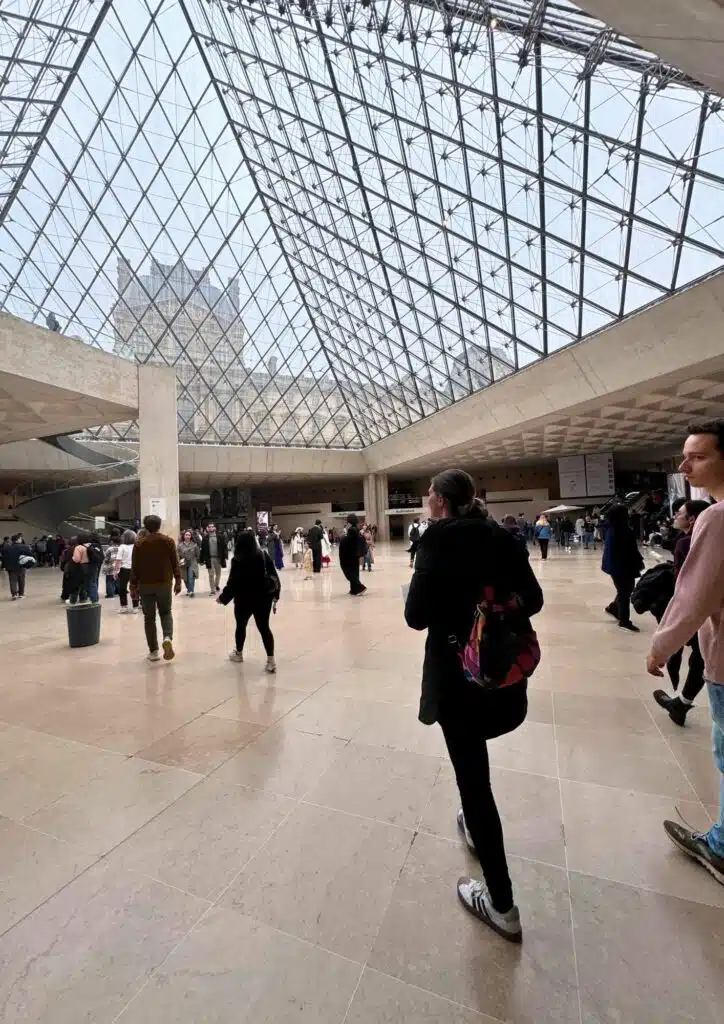
Of course, everyone goes to see the Mona Lisa. And yes, I joined the mob of tourists crowding around Da Vinci’s famous portrait. It’s smaller than you expect, behind bulletproof glass, and surrounded by people taking selfies. But seeing it in person—even from a distance—was still meaningful. There’s something about being in the same room as this piece of history.
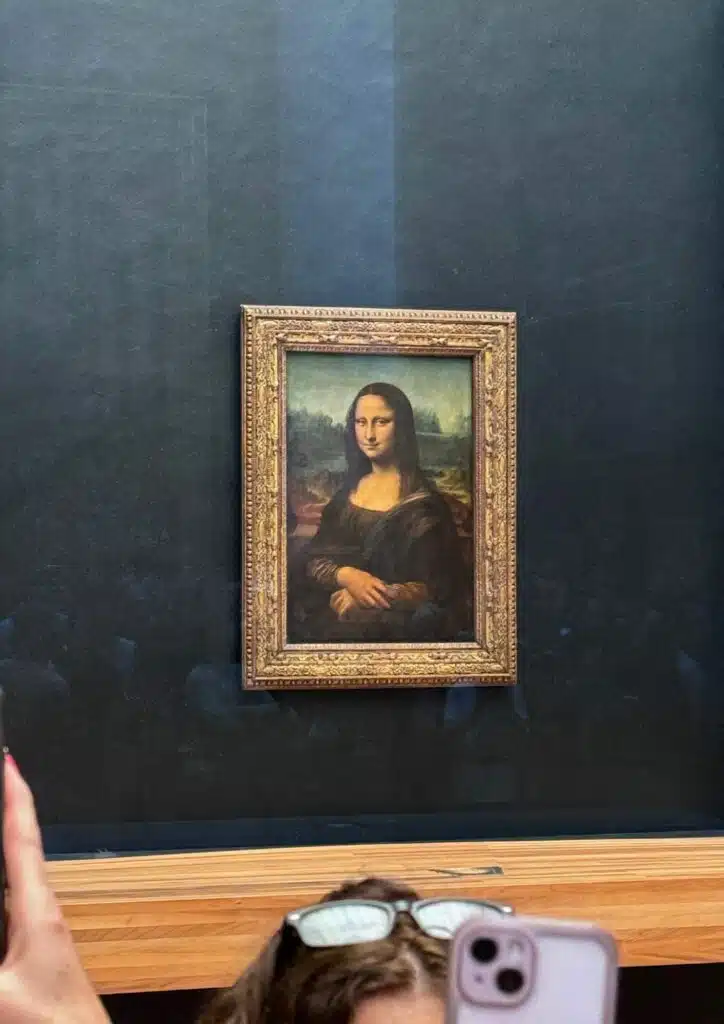
What really captured my heart, though, were the less-crowded galleries. The French Romantic paintings, the enormous canvases by Delacroix, the intimate Dutch portraits—these are where I slowed down and really looked.
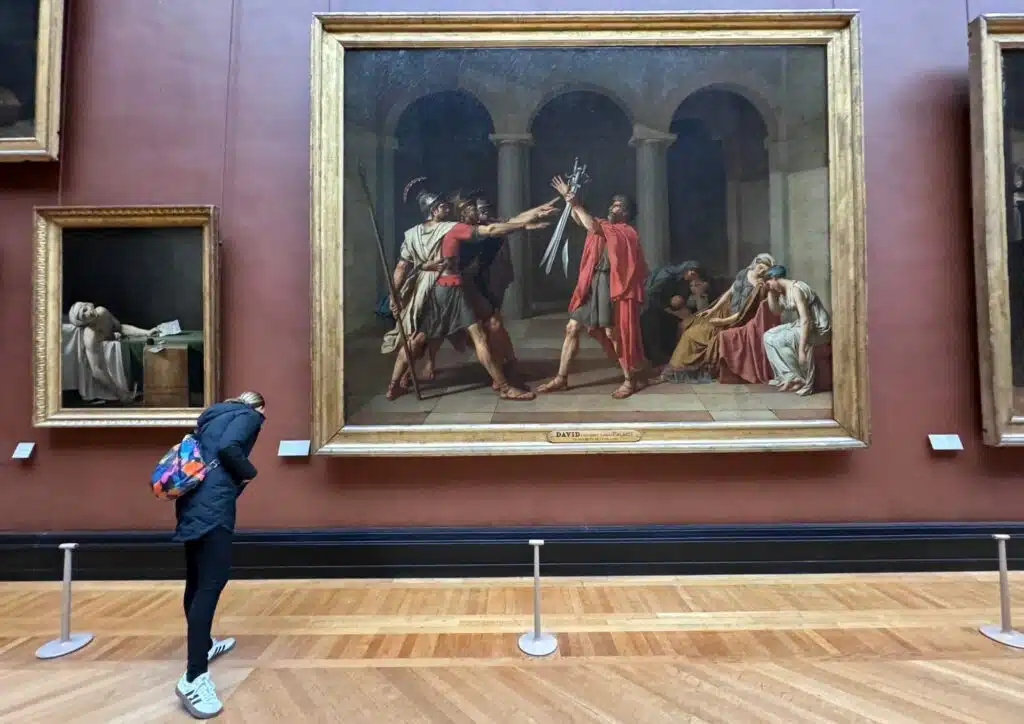
And here’s something I didn’t expect: just wandering the Louvre itself is an experience. The architecture, the way galleries connect, the views out the windows overlooking Paris—it’s all breathtaking.
After leaving the museum, I walked up to Sacré-Cœur, the stunning white basilica perched on the hill of Montmartre. The climb is worth it—the view over Paris from the steps is incredible, and the neighborhood around it is filled with artists, street performers, and creative energy. Montmartre has been an artists’ neighborhood for over a century (Picasso, Van Gogh, and Renoir all lived and worked there), and you can still feel that spirit today.
What to See:
- The Mona Lisa – Yes, it’s crowded, but it’s iconic for a reason
- Liberty Leading the People by Delacroix – This massive, powerful painting is stunning
- The Winged Victory of Samothrace – A Hellenistic sculpture that took my breath away
- Dutch and Flemish Masters – Vermeer, Rembrandt—quieter galleries, incredible work
- French Romanticism galleries – Less crowded and absolutely gorgeous
Practical Tips:
- Buy timed-entry tickets online AT LEAST a week in advance (seriously, don’t skip this)
- The museum is HUGE—plan multiple visits if you can, or focus on specific wings
- Wednesday and Friday evenings it stays open late and it’s less crowded
- There are benches throughout—use them. Sit and really look at paintings
- The nearby Tuileries Garden is perfect for sketching after your visit
- Walk up to Montmartre and Sacré-Cœur afterward for incredible views and artistic atmosphere
Where to Stay: Stay in the Marais district if you can—it’s walkable to the Louvre, full of charming cafés, and has a wonderful creative energy. Or choose Montmartre for a more bohemian, artistic vibe.
2. Musée d’Orsay, Paris
Why It’s On My Bucket List:
I didn’t make it to the Musée d’Orsay on my first Paris trip, and I’m still kicking myself. This is THE museum for Impressionist and Post-Impressionist art—Van Gogh, Monet, Renoir, Degas, Cézanne, Gauguin. As someone who loves color and light, this is my dream destination.
The museum is housed in a stunning converted railway station (the Beaux-Arts architecture alone is worth seeing), and from what I’ve researched, it’s much more manageable than the Louvre—you can actually see the highlights in half a day without feeling overwhelmed.
What I’m Dying to See:
- Van Gogh’s paintings – I need to see those thick, expressive brushstrokes in person
- Monet’s Water Lilies series – Understanding how he captured light and reflection
- Degas’ ballet dancers – His use of movement and color is stunning
- The building itself – That old train station with the massive clock face windows
Practical Tips (from my research):
- Much smaller and less overwhelming than the Louvre
- Book tickets online but usually easier to get in
- The top floor is dedicated to Impressionists—start there if you’re short on time
- Museum café on the 5th floor has incredible views
- Plan 3-4 hours to really absorb everything
Where to Stay: The Musée d’Orsay is on the Left Bank in Saint-Germain-des-Prés—a neighborhood with incredible art history, bookshops, and cafés where artists and writers used to gather.
3. Van Gogh Museum, Amsterdam
Why Every Artist Needs to Visit:
Amsterdam’s Van Gogh Museum holds the world’s largest collection of Van Gogh’s paintings, drawings, and letters. If you’ve ever been moved by his work, seeing it in person is essential.
Van Gogh’s paintings are THICK with paint—the impasto technique he used creates shadows and texture that no photograph can capture. Understanding how he built up layers, how he used color to convey emotion, how his brushstrokes create movement—you can only learn this by standing in front of the actual work.
What You’ll See:
- The Bedroom – One of his most famous paintings
- Sunflowers – Those vibrant, expressive yellows in person are breathtaking
- Self-portraits – His raw emotional honesty captured in paint
- Almond Blossoms – Delicate and hopeful, painted near the end of his life
- His letters – Reading his thoughts about color, technique, and life adds so much context
Practical Tips:
- You MUST book tickets online in advance (they often sell out days ahead)
- Plan 2-3 hours for your visit
- The museum provides excellent context about his techniques and influences
- Amsterdam is incredibly bike-friendly—rent a bike and explore like a local
- While you’re there, visit the Rijksmuseum too (it’s nearby and houses Rembrandt’s Night Watch)
Where to Stay: Stay in the Museum Quarter to be walking distance from multiple incredible museums, or choose the Jordaan neighborhood for charming canals and creative vibes.
4. Uffizi Gallery, Florence
Why Florence is Essential for Artists:
Florence is the birthplace of the Renaissance. The Uffizi Gallery houses the world’s finest collection of Italian Renaissance art—Botticelli, Leonardo da Vinci, Michelangelo, Raphael, Caravaggio.
If you want to understand how Western art evolved, how perspective was discovered, how artists learned to capture human emotion and movement—Florence is where it all happened.
What You’ll See:
- Botticelli’s Birth of Venus – One of the most iconic paintings in history
- Leonardo da Vinci’s Annunciation – His mastery of light and detail
- Caravaggio’s dramatic works – His revolutionary use of chiaroscuro
- Michelangelo’s Doni Tondo – His only finished panel painting
- Renaissance masters – Room after room of groundbreaking artwork
Practical Tips:
- Book timed entry tickets weeks in advance (the Uffizi is incredibly popular)
- Plan at least 3-4 hours, but a full day is better
- The museum is long and linear—wear comfortable shoes
- Get there right when it opens to avoid the worst crowds
- After the museum, climb to Piazzale Michelangelo for incredible views of Florence
Where to Stay: Stay in central Florence near the Duomo to be walkable to everything, or across the river in Oltrarno for a quieter, more artistic neighborhood feel.
5. The National Gallery, London
Why It’s On My List:
Free admission to one of the world’s greatest art collections. The National Gallery houses European paintings from the 13th to early 20th centuries, including works by Van Gogh, Monet, Turner, Leonardo da Vinci, and Rembrandt.
I love that London’s major museums are free (though donations are encouraged and appreciated). It means you can pop in for an hour to see specific paintings without the pressure of “getting your money’s worth.”
What I Want to See:
- Van Gogh’s Sunflowers – Those thick, expressive brushstrokes
- Turner’s landscapes – His atmospheric approach to light and weather
- The Impressionist galleries – Monet, Renoir, Seurat
- Renaissance masters – Leonardo, Botticelli, Raphael
- Vermeer’s quiet domestic scenes – His mastery of light is incredible
Practical Tips:
- Free entry (though special exhibitions may have fees)
- Located in Trafalgar Square, easy to reach
- Can get crowded on weekends—weekday mornings are quieter
- Free talks and tours throughout the day
- Excellent gift shop for art books and prints
Where to Stay: Covent Garden or South Bank put you in the heart of London’s creative energy, walkable to multiple museums, theatres, and markets.
6. Prado Museum, Madrid
Why Madrid Deserves a Spot:
The Prado Museum is Spain’s answer to the Louvre—one of the world’s finest art museums, housing masterpieces by Spanish masters like Velázquez, Goya, and El Greco, plus incredible works by Bosch, Rubens, and Titian.
If you love dramatic, emotional, powerful painting, the Spanish masters will absolutely blow your mind.
What Makes It Special:
- Velázquez’s Las Meninas – One of the most analyzed paintings in art history
- Goya’s dark, haunting works – Both his court paintings and his terrifying Black Paintings
- Bosch’s Garden of Earthly Delights – Surreal, bizarre, unforgettable
- The Spanish Golden Age – Understanding Spain’s unique artistic voice
Practical Tips:
- Book tickets online ahead of time
- Free entry during the last two hours before closing (but it gets crowded)
- Plan 3-4 hours minimum
- Madrid has incredible tapas culture—take breaks to refuel!
- The nearby Reina Sofía museum houses Picasso’s Guernica if you want more
Where to Stay: Stay near Retiro Park for a beautiful neighborhood feel, or in the historic center to be close to museums and Madrid’s vibrant energy.
What to Pack for Your European Art Museum Trip
After traveling with art supplies and learning what actually works, here’s what I recommend:
For Sketching:
- A compact travel sketchbook (A5 size is perfect)
- Quality colored pencils in a small set
- Regular graphite pencils (2B and 4B are my go-tos)
- A kneaded eraser
- Small pencil sharpener
For Watercolor:
- Pocket-sized watercolor set
- Travel brush with water reservoir
- Small watercolor sketchbook
- Paper towels or a small cloth
Other Essentials:
- Comfortable cross-body bag to keep hands free (see my artist bag recommendations)
- Portable phone charger
- Comfortable walking shoes (I can’t stress this enough!)
- Water bottle
- Small notebook for thoughts and observations
Check out my full beginner art supplies guide for more recommendations on what to bring.
This page may contain affiliate links. If you purchase something from this page, I may receive a small percentage of the sale at no extra cost to you.
Making the Most of Your Museum Visits
Slow Down You don’t need to see every painting. Pick a few rooms, a few artists you’re genuinely excited about, and spend real time with those works.
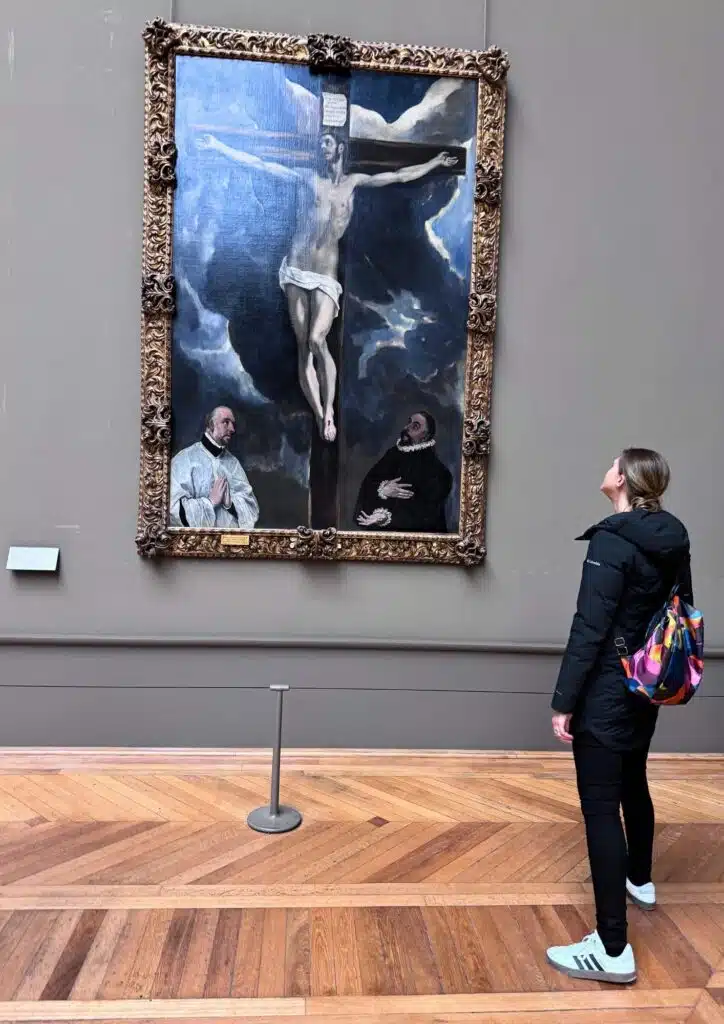
Sketch What Moves You Even quick gesture sketches force you to really observe. You’ll remember paintings you sketched far more than ones you just photographed.
Read the Wall Text Understanding context—when it was painted, why, what was happening in the artist’s life—makes art so much richer.
Sit and Observe Most museums have benches. Use them. Sit in front of a painting that speaks to you and just look. Notice details you missed at first glance.
Visit Museum Cafés Take breaks. Museum fatigue is real. Some of the best creative insights come when you’re sitting with coffee, processing what you’ve seen.
Keep a Travel Art Journal Document your impressions, sketch thumbnails, note color combinations that inspired you. Your art journal becomes a record of your creative journey.
Beyond the Museums: Finding Inspiration Everywhere
Some of my best creative moments in Europe happened outside museums. Walking through Montmartre after visiting the Louvre, seeing street artists at work, sitting in cafés sketching the people around me—this is where travel and creativity really merge.
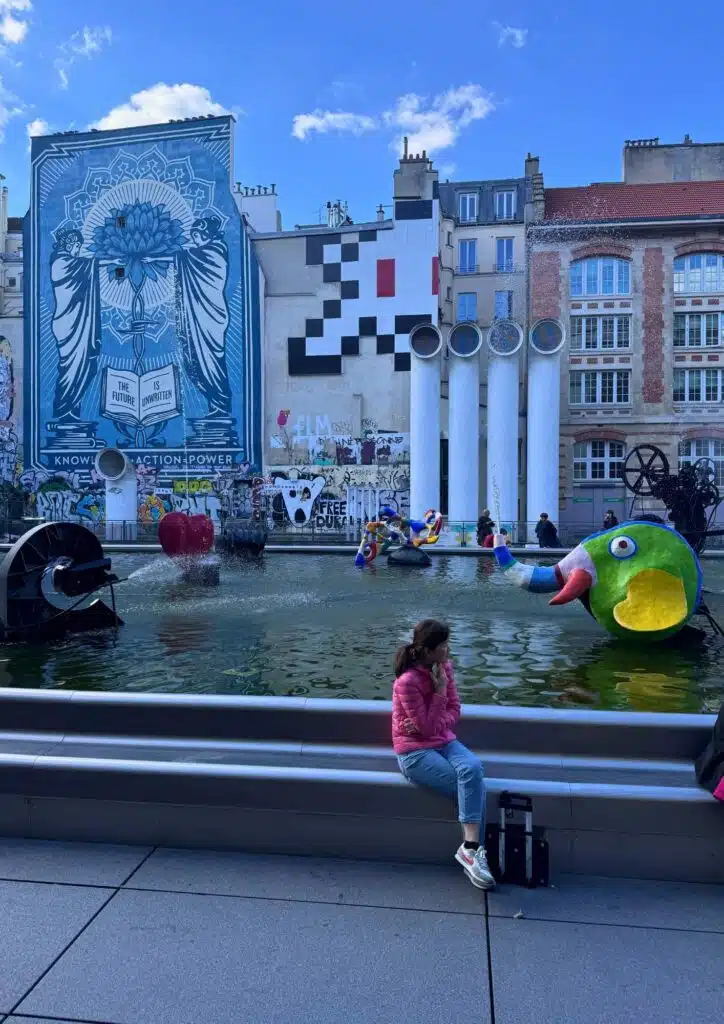
Bring your sketchbook everywhere. European cities are endlessly inspiring—the architecture, the light, the way people move through spaces. Even if you’re not confident in your drawing skills, just try. Travel sketching isn’t about creating perfect art; it’s about capturing moments and training your eye to really see.
If you need inspiration for what to draw, check out my sketchbook inspiration guide and aesthetic drawing ideas.
Final Thoughts: Your Art Pilgrimage Awaits
Planning a European art museum trip is an investment—in airfare, in accommodation, in museum tickets. But as an artist, it’s one of the most valuable investments you can make in your creative development.
Standing in front of masterpieces, seeing how the greats actually worked, understanding color and composition in ways no book can teach—it changes you. It changed me.
So start planning. Book those flights. Reserve those museum tickets. Pack your travel sketchbook and your colored pencils. Your creative pilgrimage is waiting.
And when you come home with sketchbooks full of observations and a head full of inspiration? That’s when the real magic begins.
Pin this guide and start planning your European art adventure!
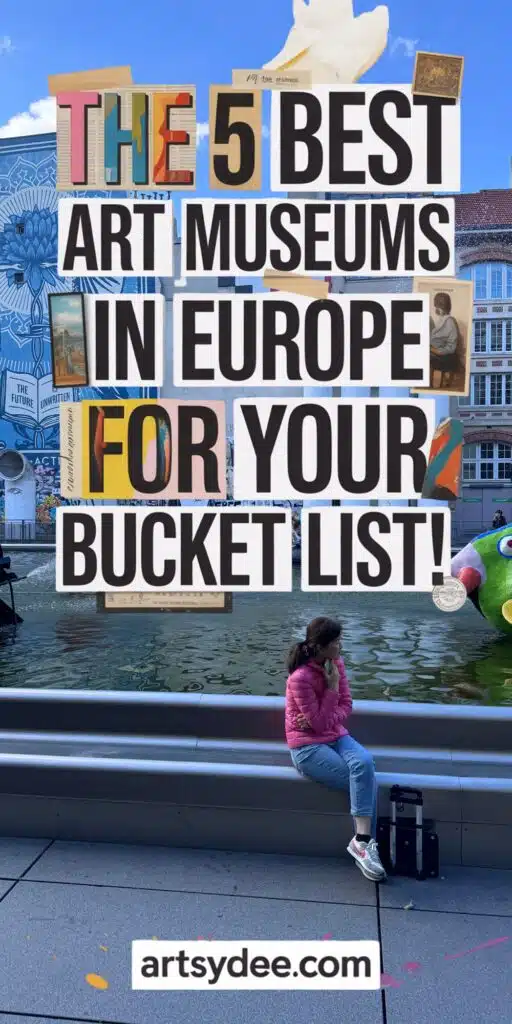
Other Articles You May Enjoy:
Best Travel Sketchbooks for Artists
